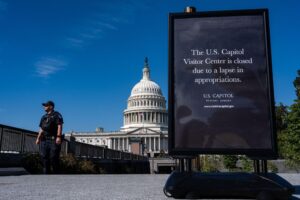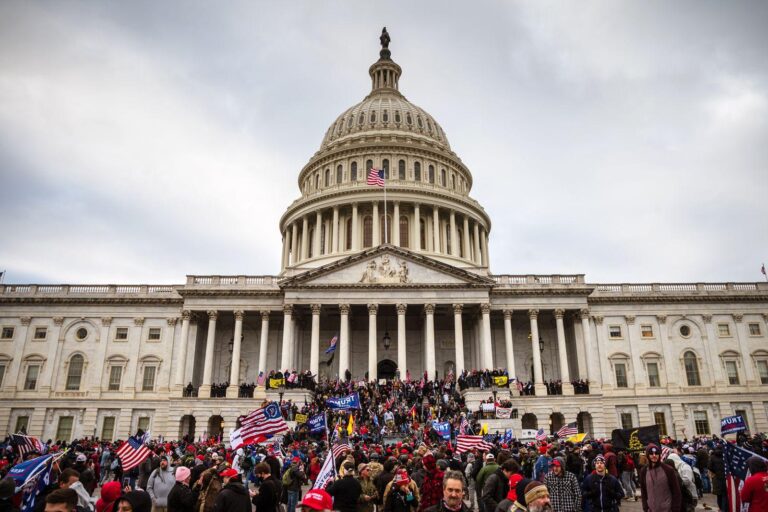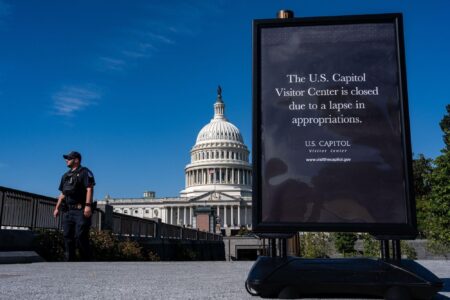On January 6, 2021, the United States Capitol became the epicenter of a violent insurrection that shook the nation’s democratic foundations. What began as a rally quickly escalated into a brutal siege, as rioters breached security and stormed the halls of Congress during the certification of the 2020 presidential election results. This unprecedented attack led to widespread condemnation, multiple fatalities, and a sweeping investigation into its causes and consequences. This article provides a comprehensive overview of the January 6 U.S. Capitol attack, detailing the background, the sequence of events, the criminal charges filed, and key facts that continue to shape the ongoing national discourse.
Background and Political Context Leading to the Capitol Attack
In the months leading up to January 6, 2021, the United States was engulfed in a politically charged atmosphere fueled by escalating tensions over the 2020 presidential election results. Former President Donald Trump and his allies repeatedly Alleged widespread voter fraud without substantial evidence, which galvanized a significant portion of his supporters. This discourse culminated in an organized rally in Washington, D.C., aimed at protesting the certification of President Joe Biden’s electoral victory. The rhetoric surrounding the event was marked by calls to “stop the steal,” encouraging demonstrators to challenge the formal congressional process.
Several factors contributed to the volatile context:
- Polarized Media Landscape: Amplification of partisan narratives intensified mistrust in institutions.
- Social Media Mobilization: Platforms served as key organizing tools and echo chambers for misinformation.
- Historic Political Divisions: Deep-rooted ideological divides widened, undermining consensus.
| Key Event | Date | Significance |
|---|---|---|
| Presidential Election | November 3, 2020 | Trigger for electoral disputes and allegations |
| “Stop the Steal” Rally Announcement | December 19, 2020 | Mobilized supporters for the Capitol demonstration |
| Congressional Certification Scheduled | January 6, 2021 | Procedural step confirming presidential election outcome |
Chronology of Events During the January 6 Insurrection
On the morning of January 6, 2021, thousands of supporters of then-President Donald Trump gathered in Washington, D.C., drawn by allegations of widespread electoral fraud during the 2020 presidential election. What began as a rally near the Ellipse escalated into a violent breach of the U.S. Capitol building as a joint session of Congress was convened to certify the Electoral College results. By early afternoon, large groups had overwhelmed security perimeters, leading to the forcible entry and occupation of the Capitol. The breach resulted in extensive property damage, chaos within the chambers, and a temporary suspension of the certification process.
Key moments unfolded in rapid succession:
- 12:00 PM: Rally at the Ellipse begins, featuring speeches urging protesters to march on the Capitol.
- 1:00 PM: Protesters start arriving at the Capitol perimeter, clashing with law enforcement.
- 2:15 PM: Security barriers are breached; rioters enter the building.
- 2:30-4:00 PM: Lawmakers are evacuated or hunker down as the chaos escalates inside chambers.
- 6:00 PM: National Guard and federal forces regain control of the building.
| Time (EST) | Event | Impact |
|---|---|---|
| 12:00 PM | Trump Rally Kickoff | Spurred initial march to Capitol |
| 2:15 PM | Capitol Breach | Security forces overwhelmed |
| 4:00 PM | Evacuation Orders Issued | Lawmakers moved to safety |
| 6:00 PM | Building Secured | Restoration of order |
Legal Proceedings and Criminal Charges Against Defendants
Following the unprecedented breach of the U.S. Capitol on January 6, 2021, federal authorities launched extensive investigations leading to the arrest and prosecution of hundreds of individuals. Those charged face a spectrum of criminal offenses, ranging from trespassing and unlawful entry to violent assaults on law enforcement officers. Many defendants have been indicted on serious charges including conspiracy, obstruction of an official proceeding, and assaulting or resisting federal officers. The Department of Justice has emphasized the importance of holding accountable those who perpetrated violence and disrupted the constitutional process of certifying the 2020 presidential election results.
Legal proceedings vary widely in complexity and scope, with some defendants accepting plea agreements, while others remain in ongoing trials. The courthouse calendar has been inundated with cases that underscore the gravity of the events. Below is a synopsis of key criminal categories and their corresponding consequences:
| Charge Category | Typical Penalties | Case Examples |
|---|---|---|
| Unlawful Entry & Trespassing | Fines, probation, up to 6 months imprisonment | Many first-time offenders and protesters |
| Assault on Law Enforcement | Up to 20 years in federal prison | Defendants who used weapons or physical force against officers |
| Conspiracy and Sedition | Up to life imprisonment in extreme cases | Members of organized extremist groups |
| Obstruction of Justice | Varied, depending on level of involvement | Individuals who disrupted certification of electoral votes |
- Ongoing investigations continue to identify additional suspects
- Legal counsel plays a critical role amid complex and evolving charges
- Sentencing hearings reflect the judiciary’s efforts to deter future attacks against democratic institutions
Key Facts and Lessons for Strengthening Capitol Security
Heightened Vulnerabilities: The January 6 attack exposed critical gaps in Capitol security, including underestimated threats from domestic actors and the surprise scale of the event. Key vulnerabilities included insufficient coordination among law enforcement agencies and delayed deployment of reinforcements at pivotal moments. The lack of real-time intelligence sharing and preparedness for a mass breach underscored the need for a comprehensive, unified security framework.
- Interagency communication: Crucial for swift and cohesive response.
- Rapid deployment capabilities: To manage sudden escalations on-site.
- Enhanced threat assessment: Including domestic extremism monitoring.
- Infrastructure upgrades: Reinforced barriers and controlled access points.
Moving forward, continuous training exercises simulating large-scale attacks, alongside upgraded technology such as facial recognition and crowd monitoring systems, are vital. A public awareness campaign ensuring citizen understanding of security protocols also plays a strategic role in preventing future breaches.
| Security Aspect | Pre-January 6 Status | Post-Attack Improvement |
|---|---|---|
| Interagency Coordination | Fragmented | Integrated command center |
| Physical Barriers | Limited and permeable | Sturdy fencing & checkpoints |
| Threat Intelligence | Underprioritized domestic threats | Specialized domestic extremism units |
| Response Time | Delayed reinforcement arrival | Pre-positioned rapid response teams |
In Summary
The January 6 U.S. Capitol attack remains a defining moment in contemporary American history, highlighting the fragility of democratic institutions amid political polarization. As investigations continue and legal proceedings advance, the events of that day serve as a stark reminder of the importance of upholding the rule of law and safeguarding the foundations of representative government. Understanding the background, key events, and ongoing ramifications is essential to comprehending the broader implications for the nation’s future.





